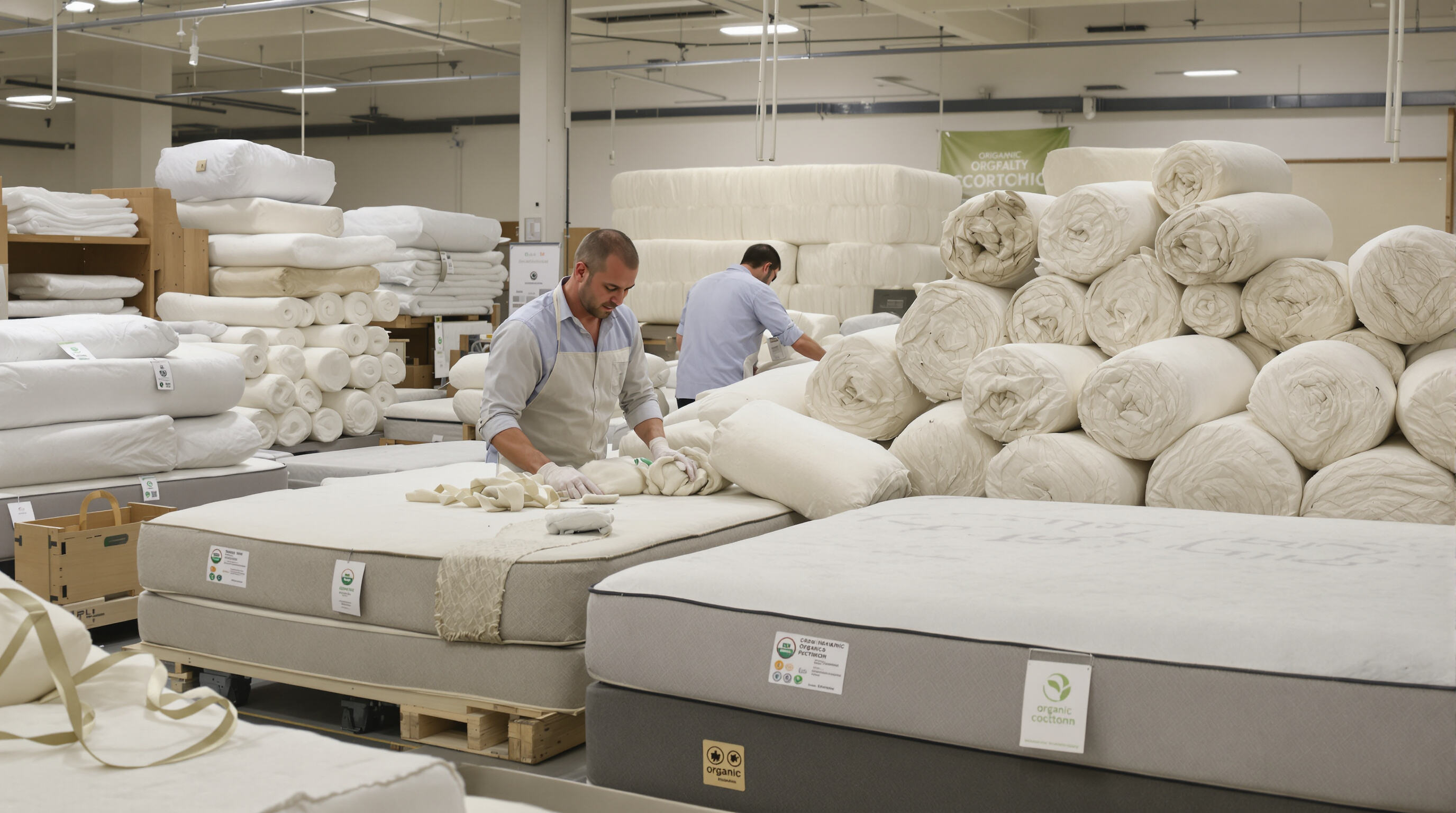Looking at a bedding factory? Safety, sustainability and ethical practices should definitely be on the radar when checking out certifications. There are several reputable standards worth knowing about. For textiles, look for GOTS which stands for Global Organic Textile Standard. If it's latex products we're talking about, then GOLS or Global Organic Latex Standard is what to watch for. CertiPUR-US® certification means the foam has low emissions, while OEKO-TEX® covers chemical safety aspects. These various certifications basically act as proof that products actually meet strict health and environmental requirements. They also help ensure better materials overall and hold factories responsible for their production processes. Most consumers don't realize just how much difference proper certification can make in what ends up under their heads at night.
When looking at organic bedding options, GOTS and GOLS certifications matter quite a bit. For something to carry the GOTS label, it needs to contain no less than 70% organic materials, and manufacturers can't use those nasty chemical dyes or harsh processing agents either. Then there's GOLS which is even stricter when it comes to latex products. This standard demands that at least 95% of the material be organic, plus they want proof that the latex was harvested in ways that don't harm the environment. What makes both certifications trustworthy? They go beyond just checking finished products. Independent auditors actually walk through every step from farm to factory, making sure workers are treated fairly and that companies aren't dumping waste into local waterways or anything like that.
Trusted factories comply with CertiPUR-US® and REACH regulations to limit exposure to volatile organic compounds (VOCs) and formaldehyde. CertiPUR-US® certifies foam emissions at <0.5 ppm formaldehyde, in line with WHO indoor air quality guidelines. REACH-compliant facilities also restrict 197 substances of very high concern across all bedding components.
The US Consumer Product Safety Commission, or CPSC for short, has put in place regulations under 16 CFR Part 1633 that basically means all mattresses need to hold off against open flames for about half an hour. To pass muster, materials have to show they burn less than ten percent when tested vertically, and these tests are done by outside labs not connected to the manufacturers. Most factories that follow these rules tend to go with naturally fire resistant stuff such as organic wool rather than relying on those nasty chemical flame retardants that people keep complaining about lately.

When bedding is made from organic materials, it cuts down on contact with pesticides which are actually used in about a quarter of regular cotton farming according to OTA data from 2023. Plus there's less exposure to those harmful VOCs too. For people looking at GOTS certified organic cotton specifically, this stuff doesn't contain any synthetic fertilizers. That makes a real difference for folks with sensitivities since studies show respiratory problems drop around 68% when using these products as per the Chemical Safety Report back in 2022. From an environmental standpoint, organic fibers just break down so much quicker than synthetic ones. They decompose roughly three times faster actually, which helps support circular production methods and means less stuff ending up in landfills over time.
Factories committed to non-toxic production provide batch-specific documentation detailing:
A trusted bedding factory adheres to SA8000 certification, ensuring living wages, safe working conditions, and limits on overtime. Consumer surveys indicate 68% of buyers favor brands audited for fair labor practices. Factories aligned with UN Sustainable Development Goal 8 (Decent Work) report 34% lower employee turnover than industry averages.
Top manufacturers achieve 92% material utilization using CNC cutting and modular designs that repurpose textile scraps into insulation or packaging. Closed-loop water systems and solvent-free adhesives reduce hazardous waste by 81% (Textile Exchange 2023), while OEKO-TEX® ECO PASSPORT certification validates responsible chemical use.
Solar-powered stitching lines and biomass boilers decrease reliance on fossil fuels. ENERGY STAR® certified facilities report 27% lower emissions per mattress. ISO 50001 frameworks enable precise tracking of energy use (kWh/sq ft), and carbon offset partnerships support reforestation to neutralize residual emissions.

The best bedding manufacturers have incorporated several quality control frameworks into their operations including ISO 9001 standards, Lean manufacturing principles, and Six Sigma techniques. With ISO 9001, they set up proper process controls throughout production. The Lean approach helps cut down on wasted materials and time through better organization methods known as 5S. Meanwhile, Six Sigma works to minimize product variation so everything comes out consistently good. Top performing plants actually manage to keep defects under 0.1%, which is pretty impressive compared to industry standards from 2024. Putting all these together into one comprehensive Quality Management System makes sense for most businesses since it covers every stage from initial design concepts right through material sourcing and final assembly lines.
Lean manufacturing enhances bedding production through:
Factories enforce strict supplier vetting, including:
Quality Assurance (QA) focuses on preventive measures like equipment calibration and staff training, while Quality Control (QC) involves reactive checks such as spring pressure tests or quilting inspections. High-performing factories allocate 70% of resources to QA, reducing post-production defects by 40% compared to QC-heavy models.
Consumers increasingly expect verifiable proof of a product’s journey from raw material to finished bedding. End-to-end traceability has become a hallmark of trusted manufacturers, enabling accountability and building consumer confidence.
Leading factories use digital systems—such as blockchain platforms—to track organic cotton, latex, and wool through every stage. Immutable records capture sourcing origins, processing methods, and shipping data, ensuring compliance with GOTS and verifying ethical practices valued by eco-conscious buyers.
Testing happens on every production batch for things like VOC emissions below 1,000 micrograms per cubic meter, formaldehyde at under 100 parts per million, plus checking flammability according to those CPSC guidelines. When third parties do their audit work, they connect these test findings directly to specific batch numbers. This creates what we call a closed loop system where problems can be spotted and fixed pretty quickly if something goes wrong. According to Supply Chain Digest from last year, manufacturers who have good tracking systems see about a two thirds drop in product recalls. Better traceability also builds customer confidence because companies can actually back up their green claims with real data instead of just making promises.
 Hot News
Hot News2025-09-04
2025-09-02
2025-09-01
2025-07-08
2025-06-10
2025-11-27